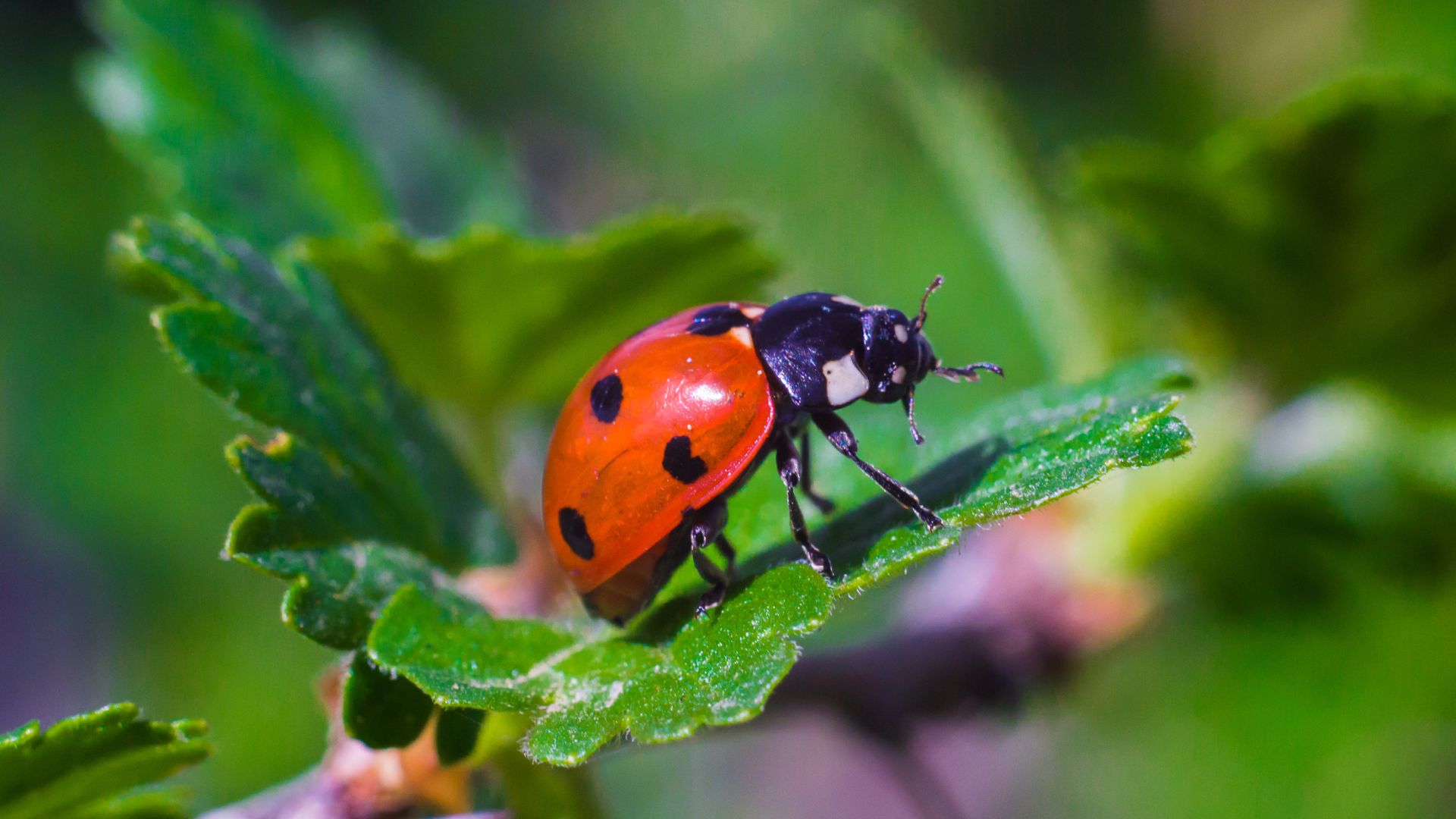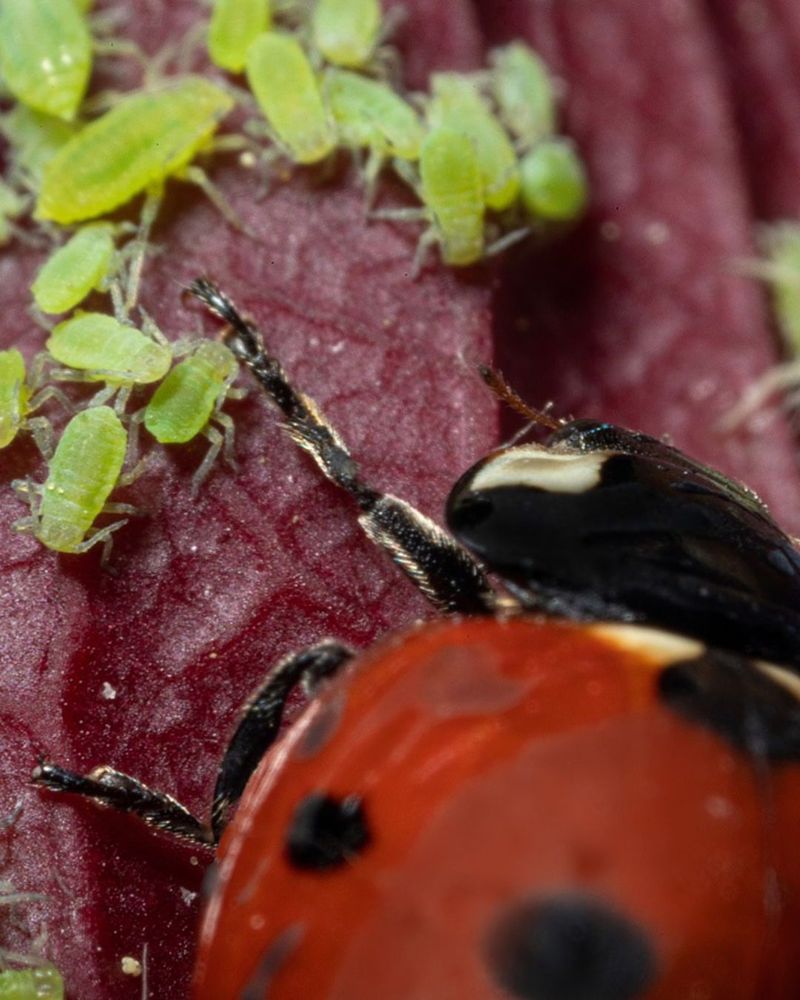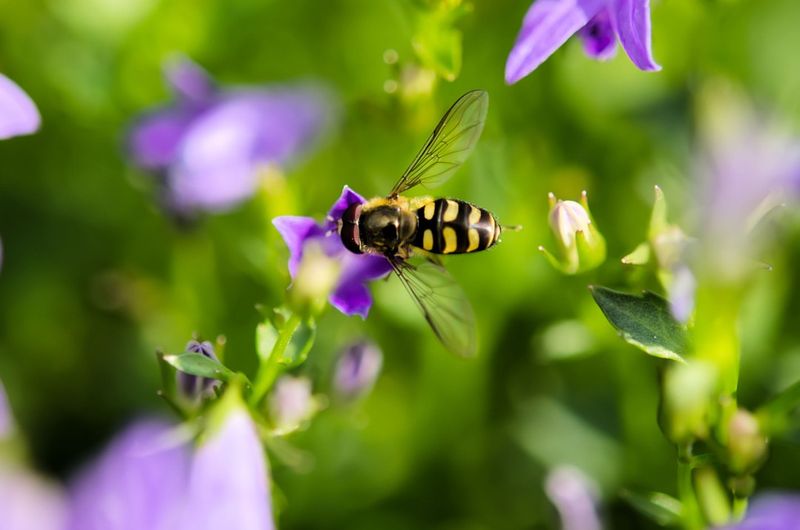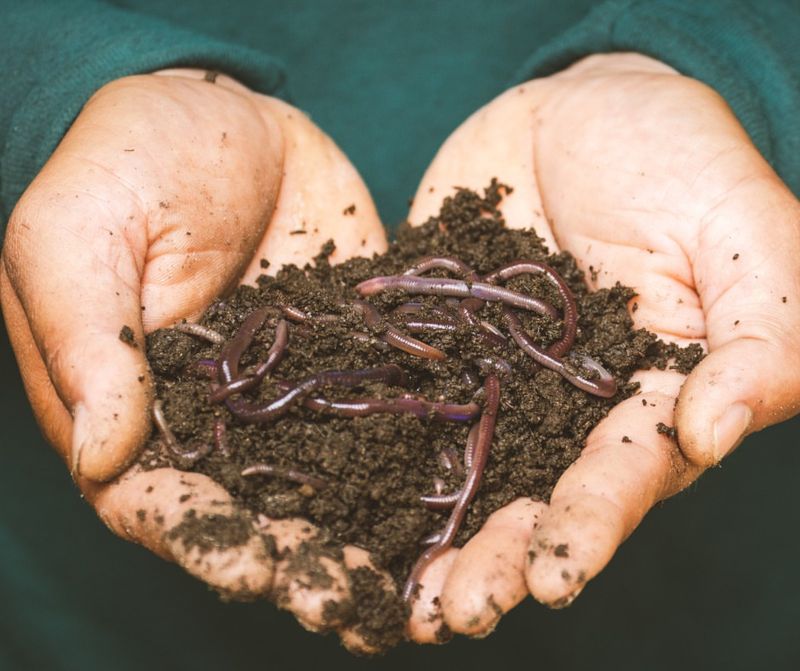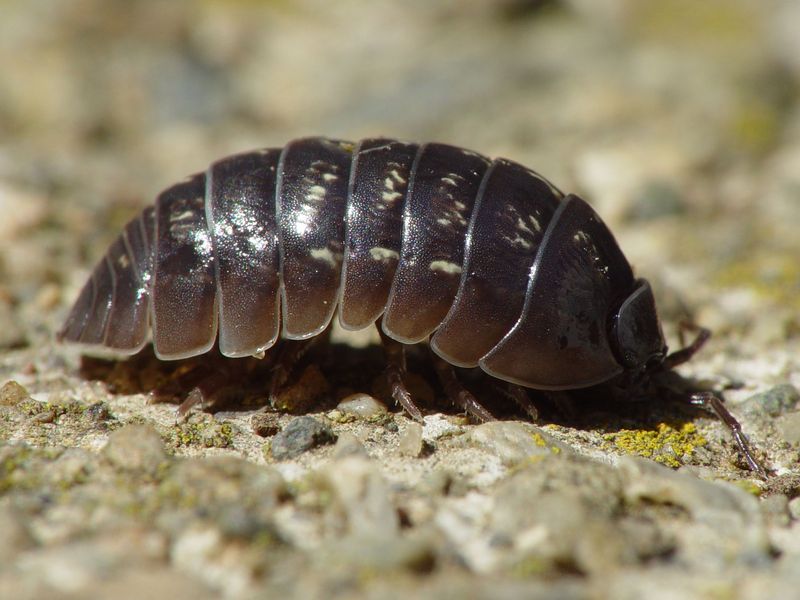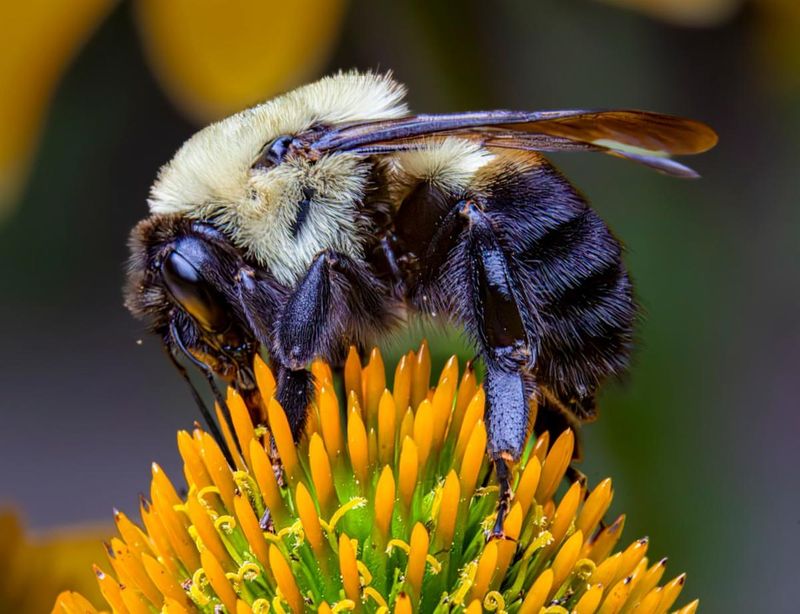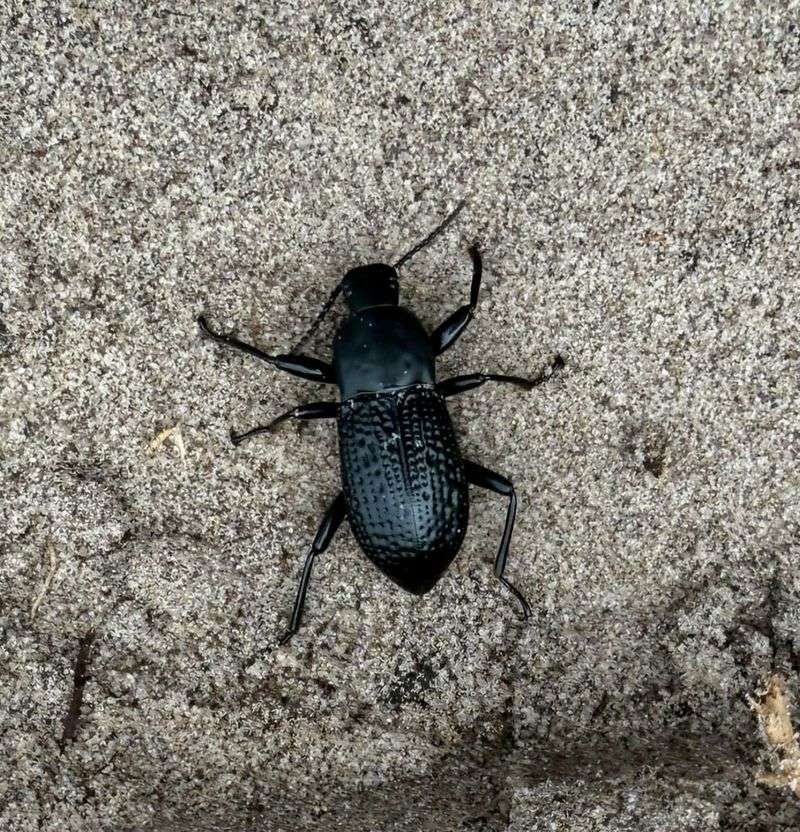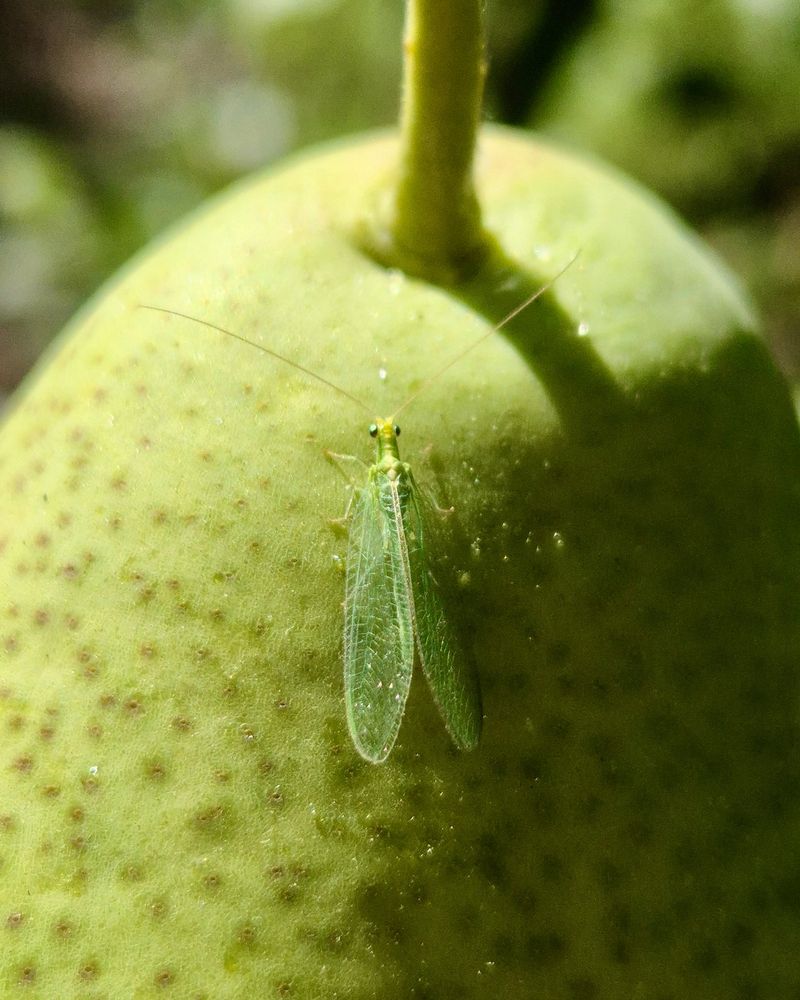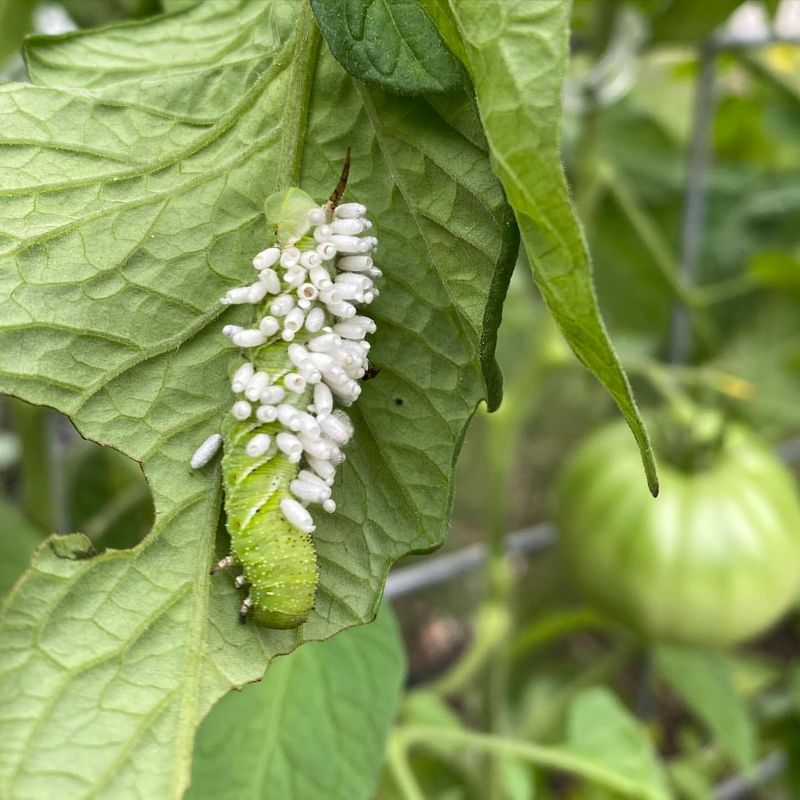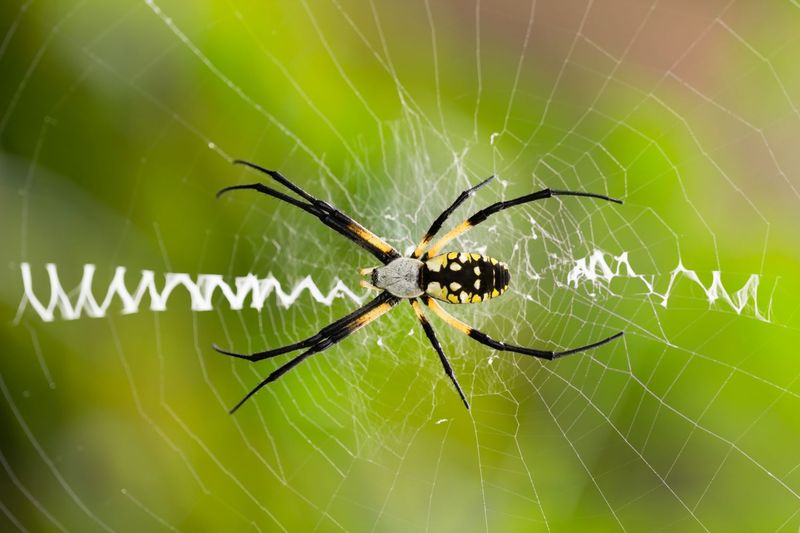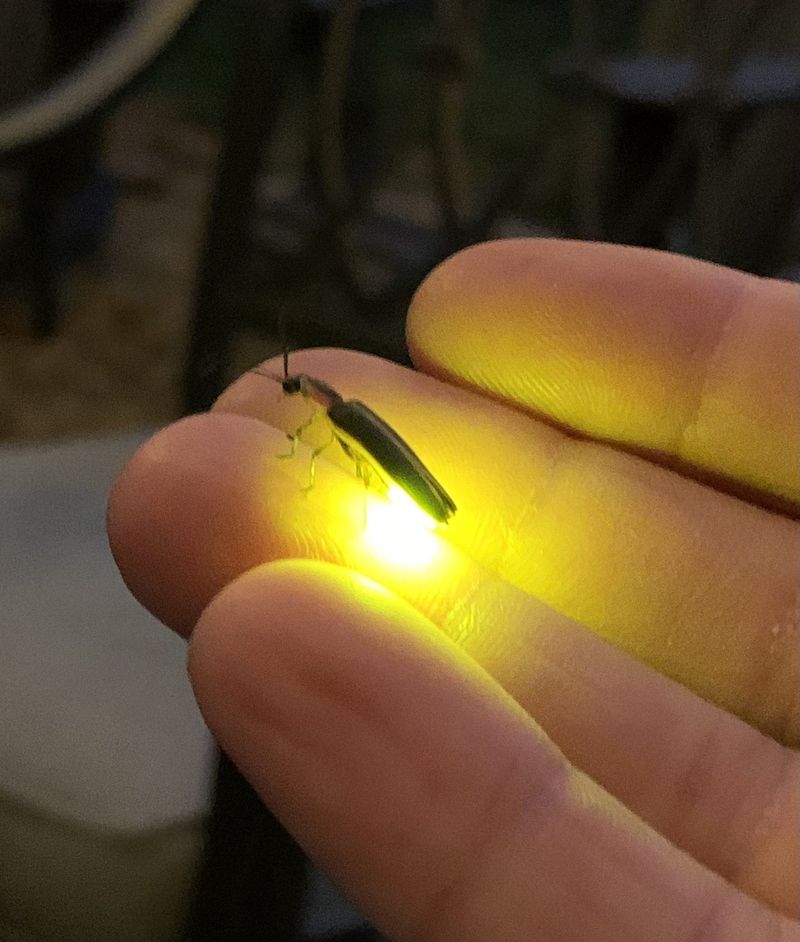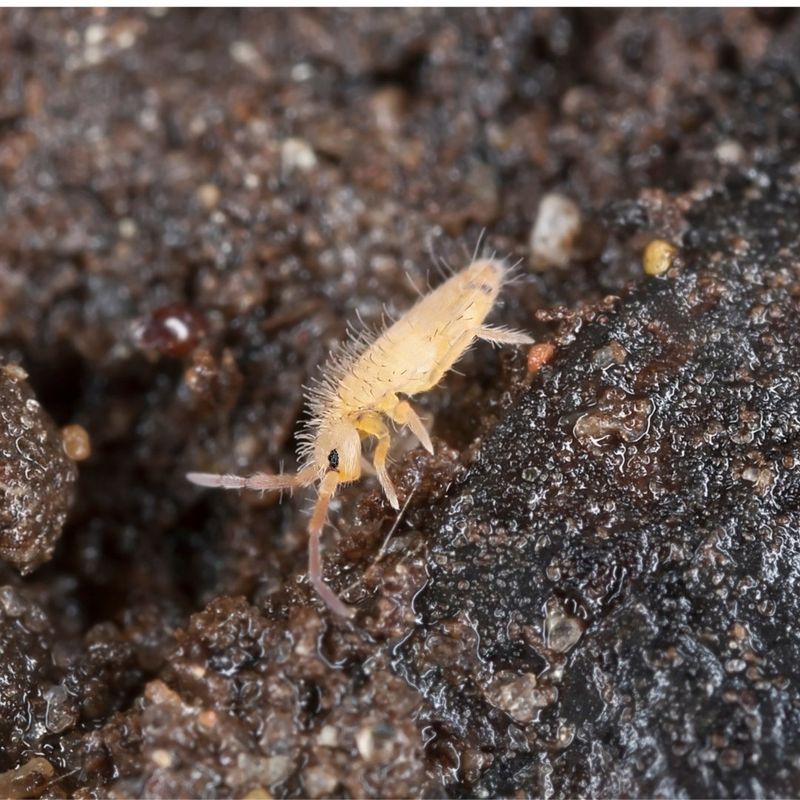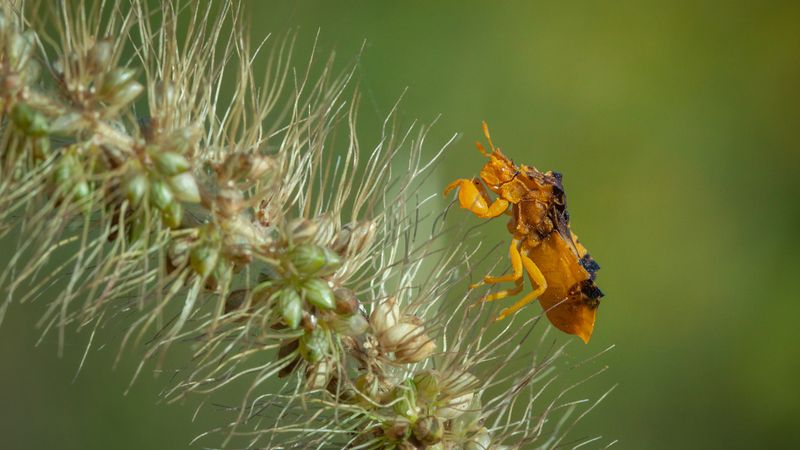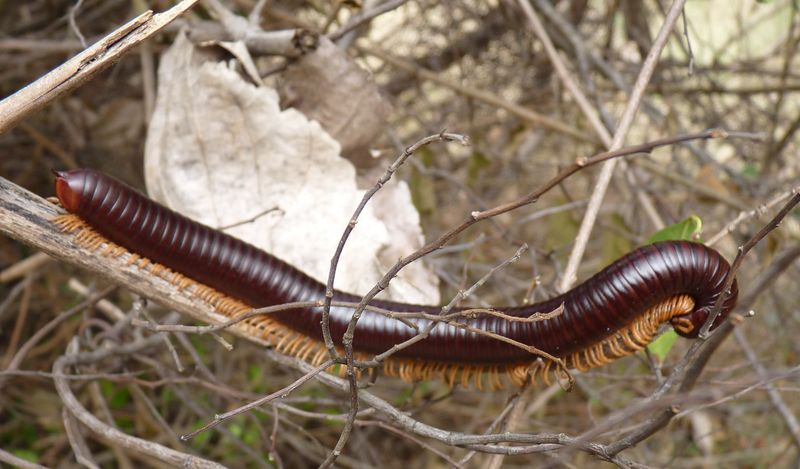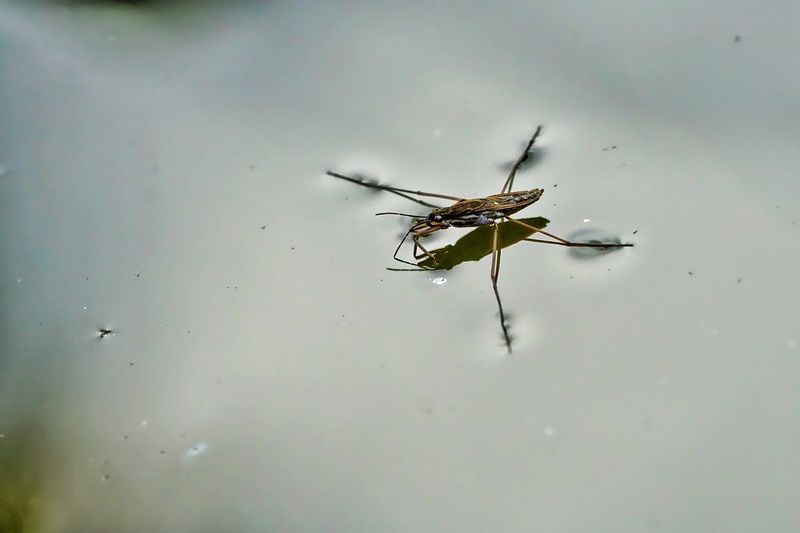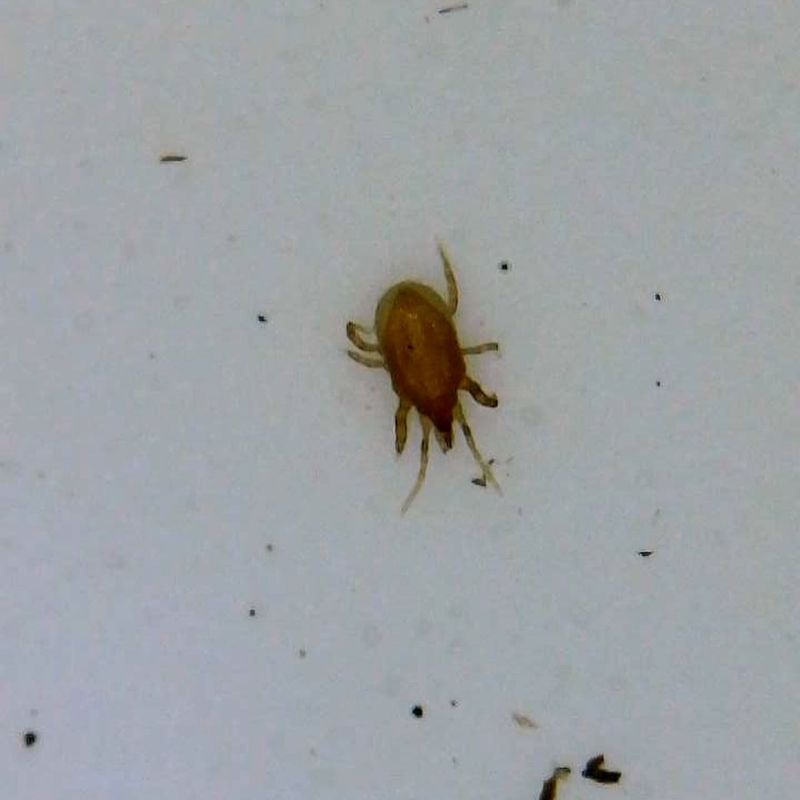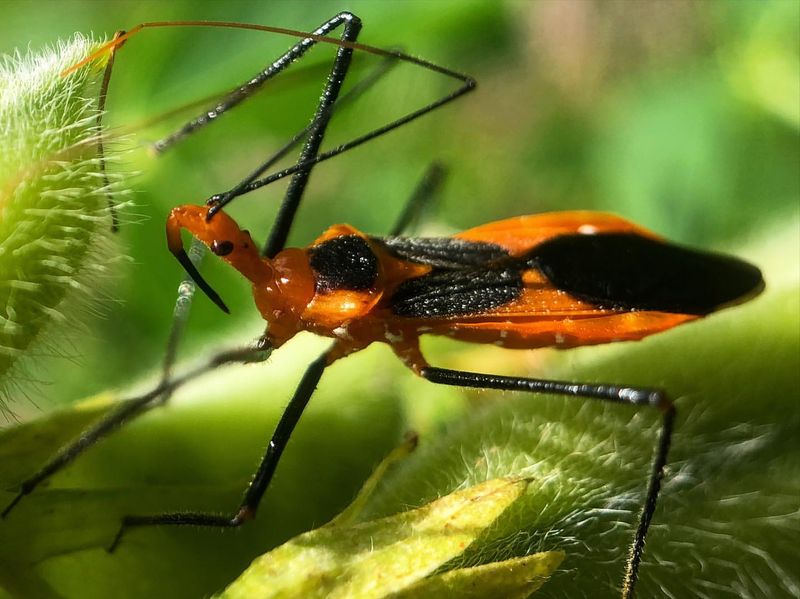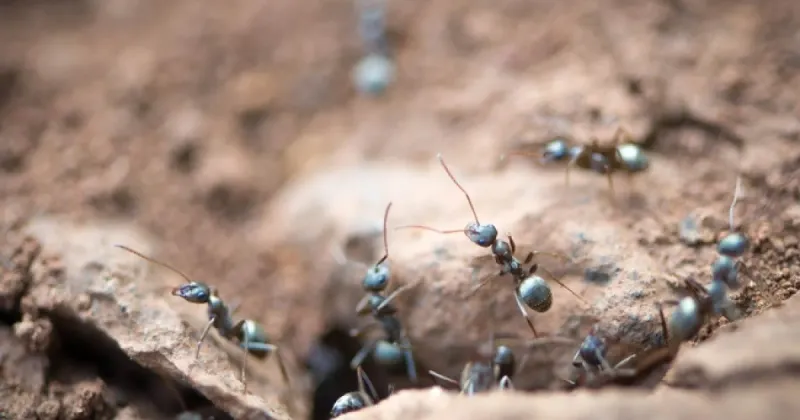Your garden might be crawling with tiny legs—but don’t be too quick to stomp! Not all bugs are bad news. In fact, many are silent partners in keeping your plants healthy and happy.
These helpful insects pollinate flowers, gobble up harmful pests, and enrich the soil in ways you might never see. Ladybugs, lacewings, and ground beetles? They’re the VIPs of your backyard ecosystem. Once you know who’s who, you’ll start to see your garden differently.
Protecting these beneficial bugs means fewer chemicals, healthier plants, and a more balanced space—all with a little help from nature’s tiniest gardeners.
1. The Spotted Garden Defender
Ladybugs feast on aphids, mealybugs, and other soft-bodied pests that damage plants. A single ladybug can devour up to 5,000 aphids in its lifetime!
These colorful beetles are like tiny garden guardians that protect your plants without chemicals. Their larvae look like tiny alligators and are even more voracious predators than the adults.
I once released a container of ladybugs in my vegetable patch and watched in amazement as they quickly dispersed to hunt down colonies of aphids that had been destroying my pepper plants.
2. The Hovering Pollinator
Mimicking bees or wasps with their striped bodies, hover flies are completely harmless to humans. These remarkable insects are dual-purpose garden allies, serving as both pollinators and pest controllers.
Adult hover flies feed on nectar and help pollinate plants, while their larvae consume aphids by the hundreds. Watching them hover perfectly still in mid-air before darting to another flower is truly mesmerizing.
Plant some sweet alyssum or dill to attract these beneficial insects to your garden space.
3. The Nighttime Soil Engineer
Finding an earthworm might not seem exciting, but these underground workers are vital for garden health. They create channels for water and air to reach plant roots while producing nutrient-rich castings.
Gardens with healthy earthworm populations often show improved plant growth and require less fertilizer. Their constant tunneling mixes soil layers and breaks down organic matter into plant-available nutrients.
During a garden renovation, I counted over 20 earthworms in a single shovelful of soil – a true sign of healthy ground!
4. The Armored Garden Cleaner
Rolling into a perfect ball when disturbed, pill bugs (also called roly-polies) are actually land-dwelling crustaceans rather than insects. These fascinating creatures help break down dead plant material and return nutrients to the soil.
Most active in damp areas, pill bugs feed primarily on decaying matter rather than living plants. They’re particularly valuable in compost piles where they speed up decomposition.
Children in my neighborhood love finding these harmless creatures and watching them curl up in their hands before gently returning them to the garden.
5. The Graceful Predator
Praying mantises are nature’s perfect ambush hunters, patiently waiting to snatch pests with their powerful front legs. These distinctive insects control moths, beetles, flies, and even small rodents in larger species.
Gardeners sometimes purchase mantis egg cases to introduce these beneficial predators. Their triangular heads can rotate 180 degrees, giving them an exceptional field of vision to spot prey.
Last summer, a mantis took up residence in my rosebush and kept it completely free of Japanese beetles – much more effective than any spray!
6. The Buzzing Plant Matchmaker
Native bees often outperform honeybees at pollinating certain plants, especially those with specialized flower structures. Unlike honeybees, most native species are solitary and nest in small holes in wood or soil.
Mason bees, leafcutter bees, and bumblebees are just a few examples of these incredible pollinators. Many work earlier in spring or in cooler weather than honeybees, ensuring early blooms get pollinated.
Creating a bee hotel with drilled wooden blocks has attracted several species to my garden, dramatically improving fruit set on my apple trees.
7. The Shy Ground Hunter
Ground beetles patrol the soil surface at night, consuming slugs, snails, cutworms, and other pests that damage garden plants. Their shiny black or metallic bodies and quick movements make them easy to identify.
Most species live for 2-3 years, providing long-term pest control. Creating simple shelters from flat stones or boards will attract these beneficial beetles to problem areas in your garden.
After adding some flat rocks around my lettuce bed, ground beetle populations increased and slug damage virtually disappeared!
8. The Jeweled Decomposer
Green lacewings are delicate insects with beautiful, transparent wings that shimmer in sunlight. Don’t let their fragile appearance fool you – their larvae are voracious predators nicknamed “aphid lions” for good reason.
Each lacewing larva can consume up to 200 aphids or other small pests per week. Adults feed primarily on nectar, pollen, and honeydew, making them excellent pollinators as well.
Growing dill, coriander and fennel has helped attract these beneficial insects to my vegetable garden year after year.
9. The Tiny Parasite Hunter
Parasitic wasps are minute insects that lay eggs inside pest insects like caterpillars, aphids, and whiteflies. When the eggs hatch, the larvae consume the host from within – nature’s own pest control system.
Most parasitic wasps are so small you’ll rarely notice them working in your garden. They’re completely harmless to humans and pets, lacking stingers large enough to penetrate skin.
Growing flowering herbs like dill and cilantro provides nectar sources that attract these beneficial micro-wasps to your garden ecosystem.
10. The Misunderstood Web Weaver
Garden spiders construct elaborate webs that catch flying insects like mosquitoes, flies, and moths. While not technically insects (they’re arachnids), these eight-legged hunters provide valuable pest control services.
Different spider species hunt in various ways – some build webs, others actively chase prey on the ground or plants. Most garden spiders are completely harmless to humans and shy away from contact.
The orb weaver in my garden built an impressive web between two shrubs, catching dozens of mosquitoes each evening during summer.
11. The Midnight Slug Patroller
Fireflies bring magical light displays to summer evenings, but their benefits extend beyond beauty. Many firefly larvae are predatory, feeding on slugs, snails, and other garden pests.
Adult fireflies typically feed on nectar or nothing at all during their short lives focused on reproduction. Their distinctive light patterns are actually complex communication signals used to find mates.
Creating damp areas with tall grasses and avoiding nighttime lighting can help attract these beneficial insects to your garden space.
12. The Tiny Soil Caretaker
Springtails are minute insects that help break down organic matter in soil and compost. Despite their tiny size (usually less than 6mm), they play a crucial role in nutrient cycling and soil health.
Found in moist environments, springtails feed primarily on fungi, algae, and decaying plant material. Their name comes from a special forked structure under their abdomen that allows them to “spring” away from danger.
A healthy population indicates good soil biology – I’ve noticed more springtails in my garden beds since switching to no-dig methods.
13. The Flower-Dwelling Assassin
Ambush bugs hide among flower petals, perfectly camouflaged while waiting for prey. These patient predators can capture insects much larger than themselves, including bees, flies, and even butterflies that visit flowers.
Their powerful front legs grab prey while their beak-like mouthparts inject digestive enzymes. Despite their fearsome hunting tactics, ambush bugs are harmless to humans and help control various garden pests.
Look closely at goldenrod and other flowers with clustered blooms – you might spot these fascinating hunters in action!
14. The Slow-Moving Cleanup Crew
Millipedes process decaying plant material, turning garden debris into nutrient-rich soil. Unlike their carnivorous cousins centipedes, millipedes are peaceful decomposers that rarely damage living plants.
These many-legged recyclers prefer damp, dark environments like under mulch or logs. Their constant feeding activity helps speed up decomposition and improves soil structure and fertility.
Adding a thick layer of leaf mulch around shrubs creates perfect habitat for these beneficial decomposers while reducing watering needs.
15. The Delicate Pond Skater
Water striders glide across pond surfaces, feeding on mosquito larvae and other aquatic insects. Their specialized legs distribute weight evenly, allowing them to walk on water without breaking surface tension.
Gardens with small water features benefit greatly from these predators that help control mosquito populations naturally. Their presence indicates a healthy aquatic ecosystem with minimal chemical contamination.
Adding a small wildlife pond to my garden attracted water striders within days – they’ve kept mosquito problems at bay for years now.
16. The Tiny Tree Guardians
Predatory mites are microscopic arachnids that hunt pest mites like spider mites and russet mites that damage plants. These beneficial hunters move quickly through foliage, consuming multiple pest mites daily.
Unlike pest species, predatory mites are typically larger and more active, with longer legs for pursuing prey. Many gardeners purchase these beneficial mites as biological controls for greenhouse and garden plants.
Regular applications of compost tea seem to increase predatory mite populations in my garden, reducing damage to tomatoes and cucumbers.
17. The Leaf-Dwelling Sentinel
Assassin bugs stalk and capture a wide variety of garden pests including caterpillars, beetles, and aphids. Their distinctive elongated heads and curved beaks inject venom that paralyzes prey and dissolves their insides.
While they can deliver a painful bite if handled roughly, assassin bugs prefer hunting insects to bothering humans. Many species come in striking colors or patterns that make them fascinating garden residents.
Growing diverse flowering plants has attracted several assassin bug species to my garden, helping control pests naturally.
18. The Communal Soil Engineers
Ants aerate soil through their extensive tunnel networks, improving drainage and root growth. Many species also distribute seeds, control pest populations, and help break down organic matter.
While some ant species can be garden pests, most are beneficial or neutral in their impact. Their colonies create complex underground structures that can extend several feet deep, enhancing soil structure.
Rather than reaching for ant poison, I’ve learned to appreciate the soil improvement services these insects provide throughout my garden beds.

